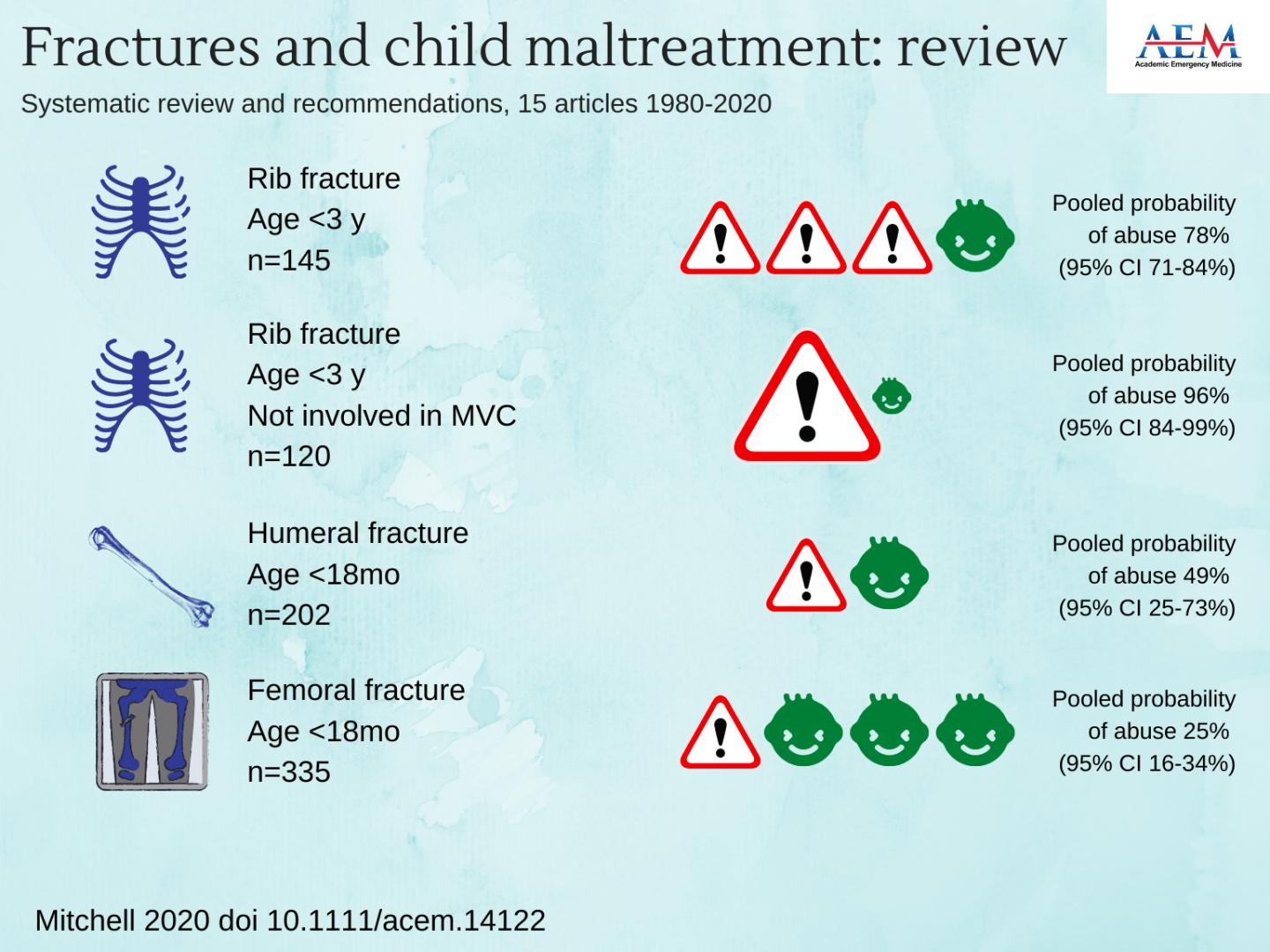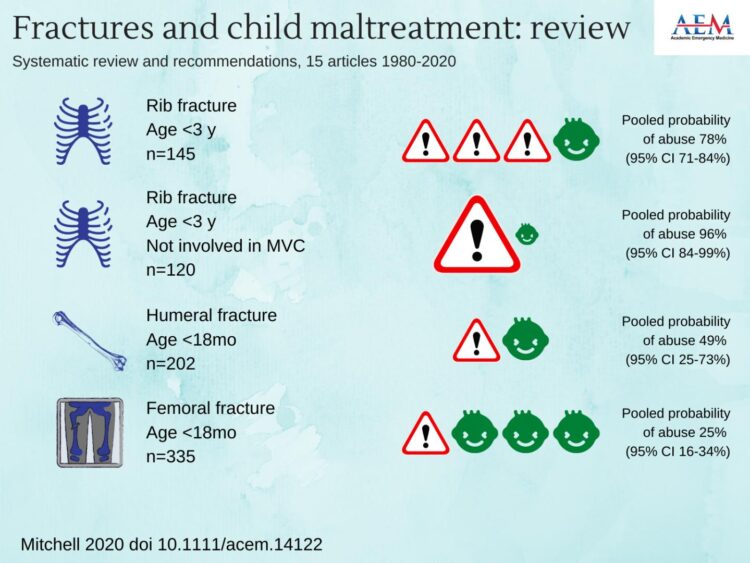
Credit: KIRSTY CHALLEN, B.SC., MBCHB, MRES, PH.D., LANCASHIRE TEACHING HOSPITALS, UNITED KINGDOM.
DES PLAINES, IL — Among children who were not in an independently verified incident, evaluation for child abuse should be done by specialty consultation in children aged less than three-years old presenting with rib fractures and children aged less than 18-months presenting with humeral or femoral fractures. That is the conclusion of a study titled Identifying Maltreatment in Infants and Young Children Presenting with Fractures: Does Age Matter?, to be published in the January 2021 issue of Academic Emergency Medicine (AEM), a journal of the Society for Academic Emergency Medicine (SAEM).
The lead author of the study is Ian C. Mitchell, MD, a pediatric surgery specialist, Departments of Surgery, University of Texas Health Science Center at San Antonio and Baylor College of Medicine, San Antonio, TX. The findings of the study are discussed in a recent AEM podcast.
According to the study findings, 77 percent of children presenting with rib fractures aged less than three years were abused; when those involved in motor vehicle collisions were excluded, 96% were abused. Abuse was identified in 48% of children less than 18?months with humeral fractures. Among those with femoral fractures, abuse was diagnosed in 34% and 25% of children aged less than 12 and 18?months, respectively.
Commenting on the study is Mark R. Zonfrillo, MD, MSCE, associate professor of emergency medicine and pediatrics at Alpert Medical School of Brown University and Hasbro Children’s Hospital:
“Undiagnosed child abuse can lead to subsequent serious injury or death, and understanding injury characteristics that can predict increased risk of an abusive injury is critical. This systematic review identified rib fractures in children younger than three years old and humeral or femoral fractures in children younger than 18 months old, and without an independently verified injury mechanism, as higher risk for abuse. For these patients, the authors recommend diagnostic evaluation and consultation for potential abuse in order to minimize morbidity and mortality from these intentional injuries.”
###
ABOUT ACADEMIC EMERGENCY MEDICINE
Academic Emergency Medicine, the monthly journal of Society for Academic Emergency Medicine, features the best in peer-reviewed, cutting-edge original research relevant to the practice and investigation of emergency care. The above study is published open access and can be downloaded by following the DOI link: 10.1111/acem.14122. Journalists wishing to interview the authors may contact Tami Craig at [email protected].
ABOUT THE SOCIETY FOR ACADEMIC EMERGENCY MEDICINE
SAEM is a 501(c)(3) not-for-profit organization dedicated to the improvement of care of the acutely ill and injured patient by leading the advancement of academic emergency medicine through education and research, advocacy, and professional development. To learn more, visit saem.org.
Media Contact
Tami Craig
[email protected]
Related Journal Article
http://dx.





